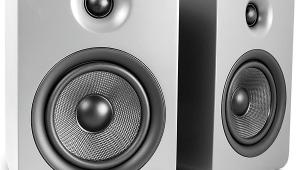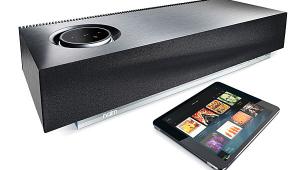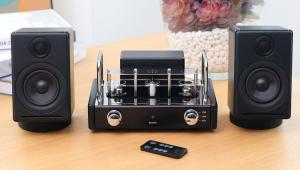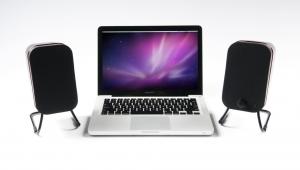Review: B&W Z2 AirPlay dock
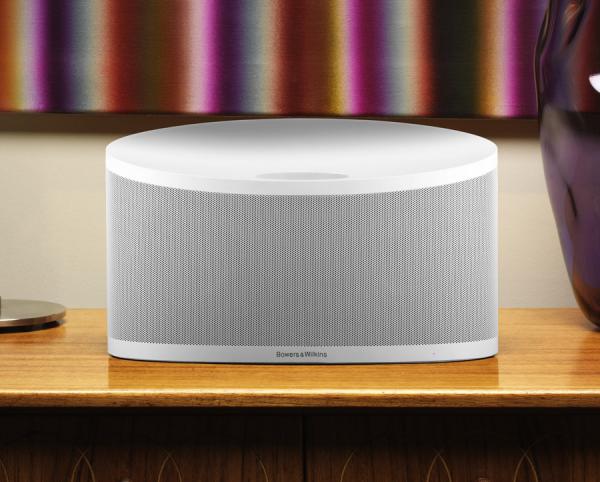
Most of us who write about technology tend to become the go-to guy when friends and family seek gear recommendations. Last Christmas, my 16 year old niece wanted to know about speakers to use with her iPod Touch. When I asked whether she wanted a dock or something that used a cable to connect, the look she shot back told me that I might as well have asked if she wanted 8-Track or cassette.
With wireless connections rapidly becoming the hookup of choice, the notion of physically linking audio components now seems like a quaint relic from decades past. Still, those in the know will tell you that going wireless often comes with an audio performance penalty — unless you do it correctly, that is.
Bowers & Wilkins is one of the few truly high-end audio companies to have fully embraced the iDevice dock concept. Docks first showed up in its Zeppelin Series of all-one speaker systems. In 2012 B&W ditched the dock when introducing the A7 and A5 AirPlay speakers, but I’m happy to see it return in the new, lower-cost Z2. Apple’s switch from the long-standing 30-pin connector to the smaller Lightning connector with the iPhone 5 caught a lot of accessory makers napping, but B&W managed to stay ahead of the curve by introducing both the Z2 and an updated Lightning version of its Zeppelin Air just as many customers started to trade in their older iPhones for shiny new Lightning-equipped iPhone 5s.
The dock may seem a bit retro — and the included 3.5-mm analog input jack even more so — but the Z2 also lets you go wire-free via Apple’s excellent AirPlay technology. Unlike Bluetooth, AirPlay uses lossless compression to send wireless audio. B&W also points out that the $399 Z2 is likely to end up on a lot of bedside tables, so it makes sense to provide a convenient place to charge a phone overnight. As an iPhone owner, I can see B&W’s point.
Unlike the larger, more statement-making Zeppelin Air, the Z2 will blend in with any decor. It has an attractive, curvaceous form and is about the size of a slim, single-slice toaster. The dock itself sits neatly hidden in a sculpted recess in the top surface that’s barely noticeable unless you look for it. One downside to the design: Your iPad won’t fit.
Setup
Manuals often claim that a given product will be simple to setup and use, but the Z2 truly delivers on that promise. The booklet in the box simply tells you to download B&W’s AirPlay app, and then follow the onscreen instructions. I did exactly that and had no problem getting the Z2 up and running in a couple of minutes, although the more detailed online manual covered additional tips and tricks. Most functions are handled by B&W’s familiar pebble-shaped remote, with basic volume and input selection controls duplicated by switches on the unit itself — just in case the remote gets lost in your sofa cushions.
Performance
When I saw that the Z2 sports only a pair of 3.5-inch “full-range” drivers, I’ll admit that I did have a few concerns about its performance potential. Yet even without separate woofers and tweeters, the Z2 manages to sound impressively full and clear. I could fill my 13 x 17-foot room with moderately loud, if not party-level music, and I didn’t feel like I was pushing things until I was hitting 86-dB peaks from my seat eight feet away.
Other than having drivers angled apart by a few degrees, the Z2 doesn’t employ any fancy tricks to enhance its stereo effect. As a result, its sound doesn’t open up much beyond a single point in the room, but on the plus side it doesn’t have the phasey quality that often accompanies artificial stereo enhancement.
John Mellencamp’s stripped-down cover of Van Morrison’s “Wild Night” jumped from the Z2, with plenty of detail in the percussion, and a bass line that was tuneful and easy to follow. With a real bass torture-test like the Keith Richards track “Words of Wonder,” the Z2 came up short on a few of the deepest, most floor-shaking notes, but overall there was a truly satisfying tonal balance,with plenty of snap to drum rimshots.
- Log in or register to post comments


